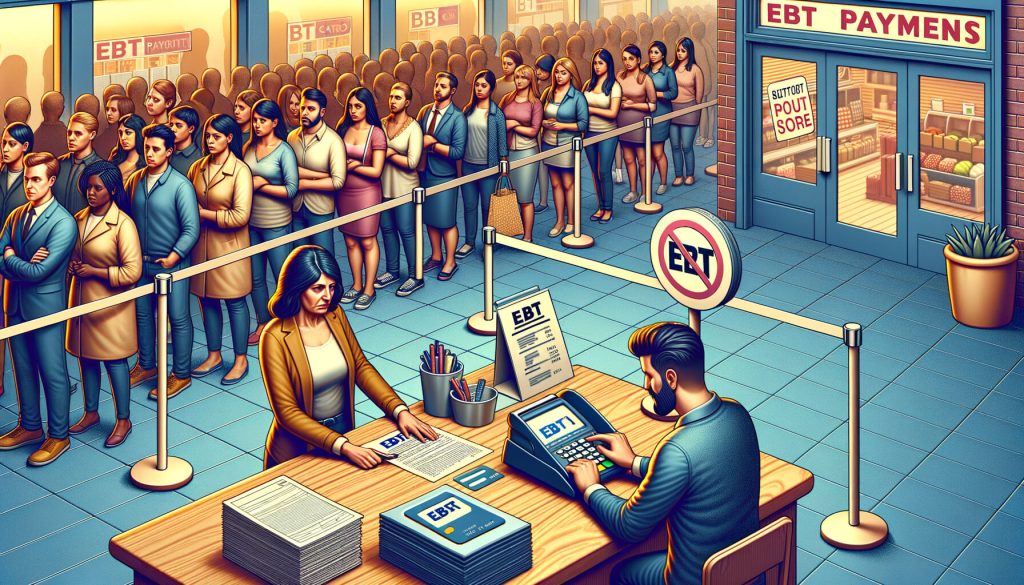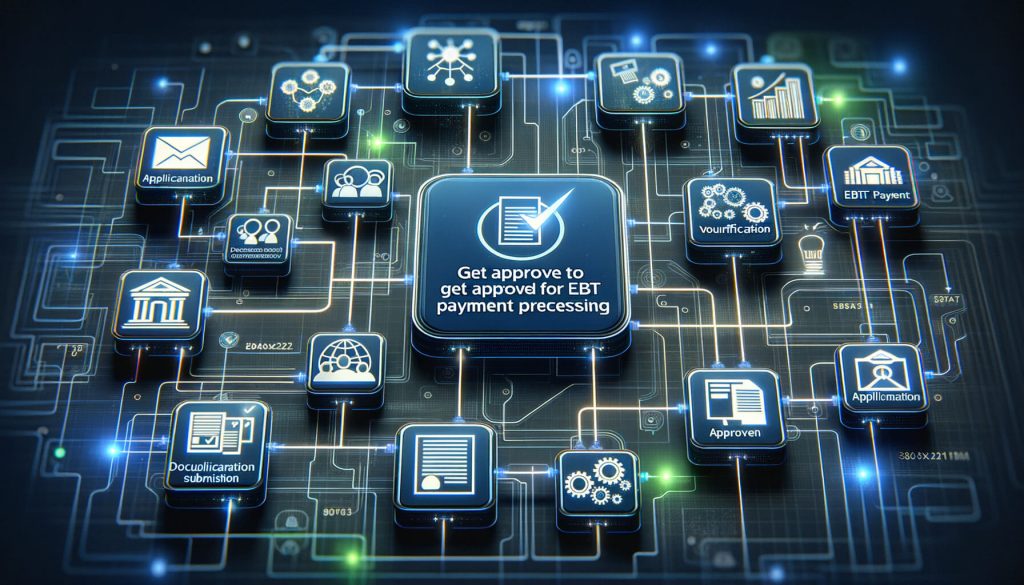
By manoj November 5, 2024
In today’s digital age, businesses are constantly looking for ways to expand their customer base and increase revenue. One method that has gained popularity in recent years is accepting Electronic Benefit Transfer (EBT) payments. EBT is a government program that provides eligible individuals with funds to purchase food and other essential items. While accepting EBT payments can open up new opportunities for businesses, it also comes with its own set of pros and cons.
In this comprehensive guide, we will explore the various aspects of accepting EBT payments in your business, including understanding EBT payments, the benefits and drawbacks, legal and regulatory considerations, implementing EBT payment systems, maximizing the benefits, overcoming challenges, and addressing frequently asked questions.
Understanding EBT Payments: What You Need to Know

EBT payments are a form of electronic payment that allows eligible individuals to access their government benefits. These benefits are typically provided through programs such as the Supplemental Nutrition Assistance Program (SNAP) or Temporary Assistance for Needy Families (TANF).
EBT cards, similar to debit cards, are issued to eligible individuals, and they can use these cards to make purchases at authorized retailers. The funds on the EBT card are preloaded by the government and can only be used for approved items, such as food and non-alcoholic beverages.
To accept EBT payments in your business, you need to become an authorized retailer. This involves completing an application process and meeting certain criteria set by the government. Once approved, you will receive a point-of-sale (POS) device that allows you to process EBT transactions. It is important to note that EBT payments cannot be used for online purchases, so businesses that primarily operate online may not benefit from accepting EBT payments.
Pros of Accepting EBT Payments in Your Business

There are several potential benefits to accepting EBT payments. These advantages can improve customer engagement, increase sales, and enhance your business’s standing in the community.
Expanding Your Customer Base
Accepting EBT enables your business to serve a larger customer base, particularly low-income individuals and families who depend on government assistance for essential purchases. By offering this payment option, you make your business accessible to a demographic that may otherwise have limited options. Expanding your customer base in this way can increase foot traffic and lead to higher sales volume. For grocery stores, farmers markets, and essential goods retailers, EBT acceptance aligns with customer needs and promotes inclusivity.
Increasing Sales and Revenue
Customers using EBT often have restricted funds for purchasing essentials, but these purchases can add up. EBT acceptance can drive consistent revenue, especially in areas where many residents depend on government assistance. EBT benefits are typically spent on staples like fresh produce, dairy, and grains, which can lead to steady sales in stores that stock these items. Retailers who accept EBT can expect a reliable stream of transactions that contributes positively to their bottom line.
Enhancing Brand Image and Community Support
Businesses that accept EBT demonstrate a commitment to serving all community members, which can enhance brand image. This acceptance sends a message of inclusivity and social responsibility, showing that your business values diversity and equal access. Community members may view your business more positively, which can lead to increased word-of-mouth referrals and a stronger reputation. Accepting EBT can align your business with community needs, reinforcing your role as a supportive, inclusive establishment.
Cons of Accepting EBT Payments in Your Business

While there are benefits to accepting EBT, there are also challenges that need to be considered. Understanding these drawbacks can help you prepare for potential difficulties or decide if EBT is not suitable for your business.
Regulatory Compliance and Complexity
Accepting EBT requires adherence to USDA regulations and guidelines, which can be complex and time-consuming. Compliance involves ensuring that only eligible items are sold to EBT customers and maintaining proper records for audit purposes. The USDA has strict requirements for businesses participating in EBT programs, and non-compliance can result in penalties, suspension, or permanent disqualification. Staying updated on regulations and implementing compliance checks may require additional resources.
Added Costs and Fees
EBT transactions can come with additional fees and costs that impact a business’s profitability. These fees vary by service provider but may include setup fees, transaction fees, and monthly service charges. Some POS systems may require updates or specialized equipment to process EBT payments, adding to operational costs. While EBT acceptance can increase sales, businesses must consider whether the potential revenue offsets these costs.
Restricted Item Categories and Limited Inventory Flexibility
EBT payments are restricted to eligible items, typically staple foods. This limitation means that certain products, such as hot foods, alcohol, or non-food items, cannot be purchased with EBT. Businesses that rely on the sale of such items may find EBT acceptance limiting, as they must enforce item eligibility during transactions. Training staff to manage these restrictions and handle mixed transactions can add complexity to the checkout process.
How to Get Approved for EBT Payment Processing

If you decide to accept EBT payments, the approval process is straightforward but requires preparation and compliance with USDA guidelines.
Eligibility Requirements for EBT Authorization
To accept EBT, your business must meet certain eligibility criteria set by the USDA. Most grocery stores, farmers markets, and retailers that sell staple foods are eligible for EBT authorization. However, businesses must maintain a minimum inventory of staple foods to qualify. Reviewing the USDA’s eligibility requirements ensures your business meets all necessary criteria before applying.
Application Process for EBT Acceptance
Applying for EBT authorization involves submitting a detailed application to the USDA’s Food and Nutrition Service (FNS). The application requires information about your business’s inventory, ownership, and location. Providing accurate information and supporting documentation is essential for a successful application. Once submitted, the USDA reviews the application and may conduct a site visit to verify compliance.
Setting Up Your POS System for EBT Transactions
Setting up your POS system for EBT transactions is essential for seamless processing and compliance. A properly configured POS system will identify eligible items, manage transaction types, and ensure accurate record-keeping.
Hardware and Software Requirements for EBT Processing
To process EBT payments, your POS system must include compatible card readers and updated software. Most modern POS systems can integrate EBT functionality, but some may require additional configuration or software updates. Verifying that your POS meets USDA standards before launching EBT transactions helps prevent technical issues at checkout.
Configuring EBT Settings on Your POS System
Setting up EBT settings on your POS involves enabling specific payment types (SNAP and WIC), configuring eligible items, and testing the system to ensure functionality. This setup allows you to process EBT transactions accurately, differentiate eligible items, and ensure compliance with program rules. Testing the system helps identify potential issues, ensuring smooth transactions when you begin accepting EBT.
Training Staff for EBT Transaction Management
Proper staff training is essential for managing EBT transactions effectively. Staff need to understand EBT regulations, identify eligible items, and provide a smooth checkout experience for EBT customers.
Key Topics for Staff Training
Training should cover EBT eligibility requirements, how to process payments through the POS system, and handling mixed transactions with eligible and non-eligible items. Employees should also learn how to assist customers with PIN entry and troubleshoot common EBT transaction issues. This knowledge helps staff confidently manage transactions and provide quality service to EBT users.
Enhancing Customer Service Skills
Providing a respectful, non-judgmental experience for EBT customers is essential. Staff should be trained to assist EBT users with empathy and discretion, ensuring a positive and inclusive shopping experience. A focus on respectful communication and efficient service helps create a welcoming environment for all customers, reinforcing your business’s commitment to inclusivity.
Best Practices for Managing EBT Transactions
Following best practices for EBT transactions can improve the checkout experience, ensure compliance, and minimize operational challenges.
Handling Split Payments and Mixed Purchases
When customers buy both eligible and non-eligible items, split payments allow for seamless checkout. Ensuring your POS system supports split payments and training staff to process them correctly is essential for a smooth customer experience. This setup prevents errors and ensures that EBT funds are only used for eligible purchases.
Managing Refunds and Returns for EBT Purchases
Refunds for EBT transactions must be processed according to USDA guidelines, typically requiring funds to be returned to the original EBT card. Managing returns and voids carefully ensures compliance, minimizes errors, and supports efficient inventory management. Staff training in handling EBT refunds is essential for maintaining accurate records and customer satisfaction.
Legal and Regulatory Considerations for Accepting EBT Payments
Before deciding to accept EBT payments, it is crucial to understand the legal and regulatory considerations involved. Businesses must comply with federal and state regulations to maintain their authorization as an EBT retailer.
One important consideration is the prohibition on charging fees for EBT transactions. The USDA strictly prohibits businesses from imposing surcharges or additional fees on EBT purchases. Violating this regulation can result in severe penalties, including loss of authorization.
Businesses must also ensure compliance with the USDA’s guidelines on eligible and ineligible items. EBT funds can only be used for approved food items, and businesses must have proper systems in place to prevent the sale of prohibited items. Regular training and monitoring of employees can help ensure compliance with these regulations.
Furthermore, businesses accepting EBT payments may be subject to periodic audits by the USDA or other regulatory agencies. These audits assess compliance with program requirements, including record-keeping, inventory control, and transaction accuracy. It is essential to maintain accurate records and be prepared for these audits to avoid penalties or loss of authorization.
Implementing EBT Payment Systems in Your Business
Implementing EBT payment systems in your business requires careful planning and consideration. The first step is to determine if your business meets the eligibility criteria to become an authorized EBT retailer. This involves completing an application process, which may vary depending on your location.
Once approved, you will need to obtain a point-of-sale (POS) device capable of processing EBT transactions. These devices are typically provided by third-party processors approved by the USDA. It is important to choose a reliable and secure POS system that integrates seamlessly with your existing payment infrastructure.
Training your employees on EBT payment processing is crucial to ensure smooth transactions and compliance with regulations. They should be familiar with the EBT payment process, including how to handle EBT cards, verify balances, and process transactions accurately. Regular training sessions and refresher courses can help maintain proficiency in EBT payment processing.
Maximizing the Benefits of Accepting EBT Payments
To maximize the benefits of accepting EBT payments, businesses can employ various strategies. Firstly, promoting the acceptance of EBT payments through signage and marketing materials can attract eligible customers to your business. Highlighting the availability of EBT payments can help differentiate your business from competitors and encourage individuals to choose your establishment.
Additionally, businesses can consider offering incentives or discounts for customers using EBT payments. This can help incentivize EBT users to choose your business over others and increase customer loyalty. However, it is important to ensure compliance with regulations regarding discounts and promotions for EBT transactions.
Furthermore, businesses can explore partnerships with local community organizations or government agencies to raise awareness about their acceptance of EBT payments. Collaborating with these entities can help reach a wider audience and establish your business as a trusted resource for individuals receiving government benefits.
Troubleshooting Common Issues with EBT Transactions
Even with proper setup and training, EBT transactions may encounter occasional issues. Preparing staff to troubleshoot these problems helps ensure minimal disruption at checkout.
Common EBT Transaction Issues and Solutions
Typical issues include declined transactions due to insufficient funds, PIN entry errors, and card reader malfunctions. Staff should know how to handle these problems, verify card balances, and troubleshoot technical errors. Being prepared for common issues enhances the customer experience and minimizes delays.
Escalating Issues to Technical Support
If issues persist, staff should escalate them to technical support, whether it’s the POS provider or the USDA’s EBT helpdesk. Knowing when and how to seek support ensures that problems are addressed efficiently, minimizing operational disruptions.
Frequently Asked Questions (FAQs)
Q1. Can all businesses accept EBT payments?
Not all businesses are eligible to accept EBT payments. To become an authorized EBT retailer, businesses must meet specific criteria set by the government and complete an application process.
Q2. Can EBT payments be used for online purchases?
No, EBT payments cannot be used for online purchases. EBT cards can only be used for in-person transactions at authorized retailers.
Q3. Can businesses charge fees for EBT transactions?
No, businesses are prohibited from charging fees or surcharges for EBT transactions. Violating this regulation can result in severe penalties.
Q4. What happens if a business violates EBT regulations?
Businesses that violate EBT regulations may face penalties, including fines, loss of authorization, or legal consequences. It is crucial to comply with all regulations to maintain eligibility as an EBT retailer.
Q5. How can businesses promote their acceptance of EBT payments?
Businesses can promote their acceptance of EBT payments through signage, marketing materials, and partnerships with local community organizations or government agencies. These efforts can help raise awareness and attract eligible customers.
Conclusion
Accepting EBT payments in your business can offer both benefits and drawbacks. By understanding the intricacies of EBT payments, businesses can make informed decisions about whether to participate in this program. The benefits include tapping into a larger customer base, enhancing reputation, and simplifying the payment process.
However, businesses must also consider the potential administrative burden, longer transaction times, and limitations on the types of products they can sell. By carefully considering the legal and regulatory considerations, implementing EBT payment systems effectively, and maximizing the benefits while overcoming challenges, businesses can successfully navigate the world of accepting EBT payments and potentially reap the rewards.